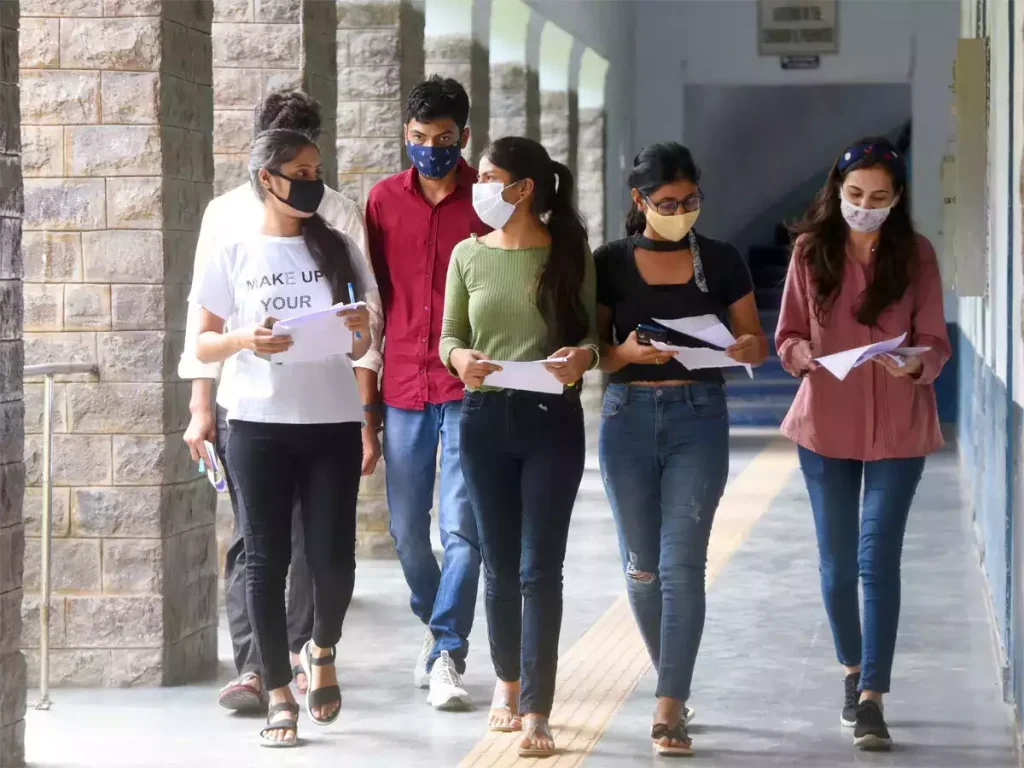
Immigration to Italy from India is a significant goal for many Indians. It is due to the possibility of quality education and promising employment, which allows you to improve your standard of living (or family) significantly. In addition, the country itself is beautiful in terms of picturesque nature and architectural monuments.
What is required to obtain permanent residence status?
In this section, we will tell you how to settle in Italy from India and obtain permanent residence status (permanent residence). For an Indian to get permanent residency in Italy, he must live in this state for at least 5 years, having the status of a residence permit (residence permit). This certificate confirms his right to long-term residence in Italy. To obtain a residence permit, you must arrive in this state with a work visa (type D – long-term) and submit all the necessary documents to the Italian Migration Service within eight days. Indians in Italy can obtain a work visa for a maximum of one year, and the Italian consulate issues it.
Before applying for a work visa, you should obtain a Nulla Osta – a document allowing an emigrant to stay in Italy for a long time in the following cases:
- Obtain a residence permit by investing in the Italian economy.
- To get hired: if this is a qualified specialist (salary more than 32 thousand euros/year), and if unqualified, a residence permit will be provided according to the approved quota. As a rule, to work in Italy for Indian is a priority.
- For training – students and schoolchildren planning to study for at least three months with a paid contract.
- Start your own business – Indians in Italy can engage in entrepreneurial activity or become a co-owner of an Italian company (initial capital of at least 500 thousand euros).
- Reunite with family – an Indian, having a residence permit, can obtain permission for the spouse of children or parents.
- Register a marriage with an Italian citizen, but first obtain a document from the Indian consulate confirming that there are no obstacles to this.
So, here are the steps needed to migrate to Italy from India for permanent residence: Nulla Osta – work visa D – residence permit (from 5 years). We looked at how to settle in Italy from India and what you need for this. Next, we will look at where it is best to stay for permanent residence.
Which regions of Italy are the most comfortable to live in?
Italy includes 15 provinces and 5 autonomous regions. The Indian population in Italy prefers the most developed economic territories located in the northern part of the state. These regions are quite picturesque and have many architectural monuments— Indians who prefer a more active life settled in Rome, Milan, and Naples.
Young people can also migrate to Italy from India, given the prestigious universities in this state (Milan, Rome, Bologna). In addition, these cities are perfect for Indian families, as the best colleges and schools in Italy are located close to higher educational institutions.
The cost of living in Italy for Indian will be more expensive if they choose to locate in the central part of the country. Accommodation here is much more costly and more suitable for entrepreneurs with significant savings. Still, the highest comfort level is provided: developed infrastructure, an excellent climate, and a picturesque area. The use of innovative technologies allows for instant international money transfer. It is essential for those Indians who plan to regularly transfer cash to a bank in India to provide financial support to relatives. Exchanging and sending money is relatively easy, thanks to the state’s modern banking systems.
You can also migrate to Italy from India to the southern regions of the country for those who prefer beaches, some of the best in Europe, and the beauty of nature. It is worth paying attention to the fact that it is prohibited to architecturally change historic buildings and landscapes. Therefore, Indians in Italy who have settled in such regions must come to terms with poor infrastructure, lack of parking areas, and problems with sewerage. In this case, transferring funds online may present some difficulties and delays. Therefore, to make bank transfer, you will have to look for, for example, an international bank (an Indian will have to use a current account or card best) where you can transfer money to your relatives’ account. Therefore, if the best online translation is essential to an Indian, such regions will not suit him.
When is the best time to come to Italy?
How to go Italy from India? Let’s take a closer look at the climatic conditions of Italy in various regions so that it is easier for Indians to navigate and choose the best time to visit Italy from India. Let’s present a short guide to climate zones:
- South part. In this region, winter is warmer compared to the northern and central parts. The beach period begins in May and ends in October. The air warms up to +45 degrees. The atmosphere of high humidity and entrepreneurs is necessary to combat mold.
- Northern part. In the northern part, the climate is influenced by the Alps. Therefore, in winter, the temperature drops from +4 to -1 degrees, but on the mountains themselves, frosts reach up to -20 degrees.
- Central part. It is the most comfortable for living, because in winter it is not lower than +8, and in summer it is not higher than +26 degrees. Traveling to this region is a dream for many Indians.
Therefore, the best time to visit Italy from India will be the period most preferred by an Indian (or family).
Cost of living in Italy
In this section, we will look at prices to determine the cost of living in Italy for Indian.
Accommodation
Even though the southern part is intended primarily for resorts, it is still cheaper to live in the south. Accommodation for one person in Italy averages 800 euros per month, while in Naples and Palermo, no more than 720 euros.
Costs for real estate and utilities reach up to 30% of income. Here are examples of the price and rental of 1m2 of real estate with one bedroom:
- Turin (northern Italy): 3500 euros, rent 600 euros;
- Palermo (southern Italy): 1700 euros, rent 500 euros;
- Rome (center): 7000 euros, rent 500 euros.
The Indian population in Italy will spend on utilities for one/two people in one apartment in the range of 170-200 euros.
Medical service
The average life expectancy in Italy is approximately 82 years (in Japan, about 85 years). This life expectancy is ensured thanks to the high level of development of medicine. To ensure access to medical services, it is necessary to purchase a state Tessera Sanitaria policy. It is issued not only to Italian citizens but also to residence permit holders. Some medical services are provided through the procedure, but many must be paid for yourself.
Indians in Italy must pay for a health policy depending on their annual income, but in any case, it should not be more than 2789 euros:
- income less than 5165 euros – policy 388 euros;
- income 5165 – 20658 euros – policy price 7.5% of income;
- income 20,658 – 51,645 euros – policy 4% of income.
If funds allow, it is possible to take out commercial insurance – the cost is 1000 euros. It provides an opportunity to access medical services faster. It is worth noting that emergency care will always be free, even if the Indian does not have health insurance.
Education
Immigration to Italy from India is more beneficial for students than for students. Public schools educate children for free, but you must pay for a university education. Many state universities provide scholarships – awards for the best students. The price for annual university training can vary from 1600 to 2800 euros.
Taxation
If you find work in Italy for Indians it will also be subject to taxation, which will depend on the annual income of the Indian and will be:
- up to 15 thousand euros – 23%;
- 15-28 thousand euros – 25%;
- 28-50 thousand euros – 35%
- more than 50 thousand euros – 41%.
In addition, real estate taxation ranges from 0.4 to 0.7% of its value. The tax amount is also affected by location. Home insurance is required in Italy – up to 2% of its price. Example: for a two-room apartment – tax is approximately 200 euros/year + tax for waste removal. When purchasing a second property, the tax increases 5 times. Italy also has a tax on global income (for residents living in the country for more than 183 days a year).
Advantages of moving to Italy for permanent residence
Immigration to Italy from India has the following benefits:
- unlimited period of residence in the country is provided;
- having the status of a residence permit or permanent residence permits you to have visa-free entry into all countries included in the Schengen territory;
- the prospect of obtaining Italian citizenship – this is of great importance because an Italian citizen receives the rights of a citizen of the European Union;
- high level of medical care, both at the state and at the commercial grade (but a commercial policy is several times more expensive than a state one);
- a diploma obtained in Italy will be recognized in all EU countries.
Thus, moving to Italy is quite prestigious for an Indian. The developed infrastructure will provide comfortable living.
Conclusion
So, how to go Italy from India? First, obtain a work visa, giving the right to a residence permit. Registration of a residence permit will take approximately six months, with the right to a residence permit for up to two years. The most favorable regions for living are the northern and central parts of Italy, with an excellent climate and developed infrastructure, where wire transfers occur immediately. After 5 years of residence permit, you can apply for permanent residence. Italian citizenship is obtained after 10 years of living in the country.





